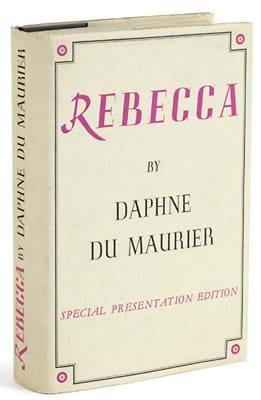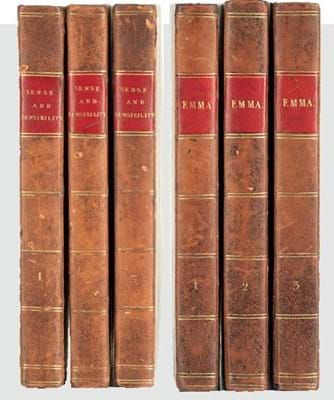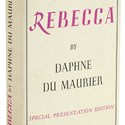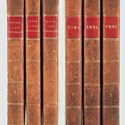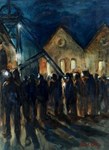However, the one that was sold for £20,000 by Bonhams (25/20/12.5% buyer’s premium) on June 20 offered something extra.
Written in purple ink on an early blank leaf is a list of the 10 Donne poems that most appealed to George Eliot, who has also added the numbers of the pages on which they are to be found.
This copy was owned in the 19th century by Barbara Leigh Smith Bodichon (1827-91), an educationalist, artist and advocate of women’s rights, co-founder of Girton College, Cambridge, and author of a Brief Summary of the Laws of England concerning Women.
Bodichon’s London salon and her home at ‘Scalands’, near Robertsbridge in Sussex, where the garden was designed by her friend Gertrude Jekyll, were a draw for her many literary and artistic friends.
The Rossettis were frequent visitors, and they and others painted their names (some 300 of them) on the bricks around the fireplace at Scalands, sometimes adding a sketch or a motto.
Eliot, who had signed the visitor book as ‘M. Lewes’*, became in time an intimate friend and was supported by Bodichon through some very difficult periods of her life.
When her first novel, Adam Bede, appeared under the now familiar pseudonym in 1859, Bodichon was quick to recognise its true authorship.
She wrote: “I know that it is you… that it is written by Marian Evans, there is her great big head and her wise wide views.”
Eliot replied that Barbara was “…the first heart that has recognised me in a book which has come from my heart of hearts”, a sentiment she later repeated in a presentation copy of the first edition. Eliot’s physical description of the heroine of her 1863 novel set in 15th century Florence, Romola, is said to bear strong resemblance to Barbara Bodichon.
* George Eliot, or Mary Anne Evans as she was born in 1819, lived with George Henry Lewes, an equally free-thinking philosopher, literary and theatre critic whose earlier marriage could not be dissolved for legal reasons.
Jane Austen favourites
Pictured top are spine-end views of two of the Jane Austen firsts that featured in the same Bonhams Knightsbridge sale as the Donne Poems. In 19th century speckled calf and marbled boards, an 1811 first of Sense and Sensibility sold at £18,000, while a 1816 first of Emma in half calf of similar vintage reached £17,000. Each bore the bookplate of Lord Camden, probably George Pratt, 2nd Marquess (1799-1866). An 1813 first of Pride and Prejudice, somewhat foxed and dampstained in a modern binding of speckled half calf gilt, sold well at £32,000.
Special Rebecca for the ‘Rajahs of the Trade’
Also part of the Knightsbridge sale was one of just 200 special presentation copies of Daphne du Maurier’s Rebecca produced by her publisher, Victor Gollancz, in 1938.
At the time Gollancz wrote to Daphne to explain that these special copies of Rebecca, printed in the same year as the first edition, were “…being sent out as a kind of ‘appetizer’ to the principal Rajahs of the Book Trade. Receiving a special copy always flatters them a great deal, and this is the first time we have every produced a special edition.”
In a jacket described by Bonhams as clipped but very clean, this copy sold at £3200.


